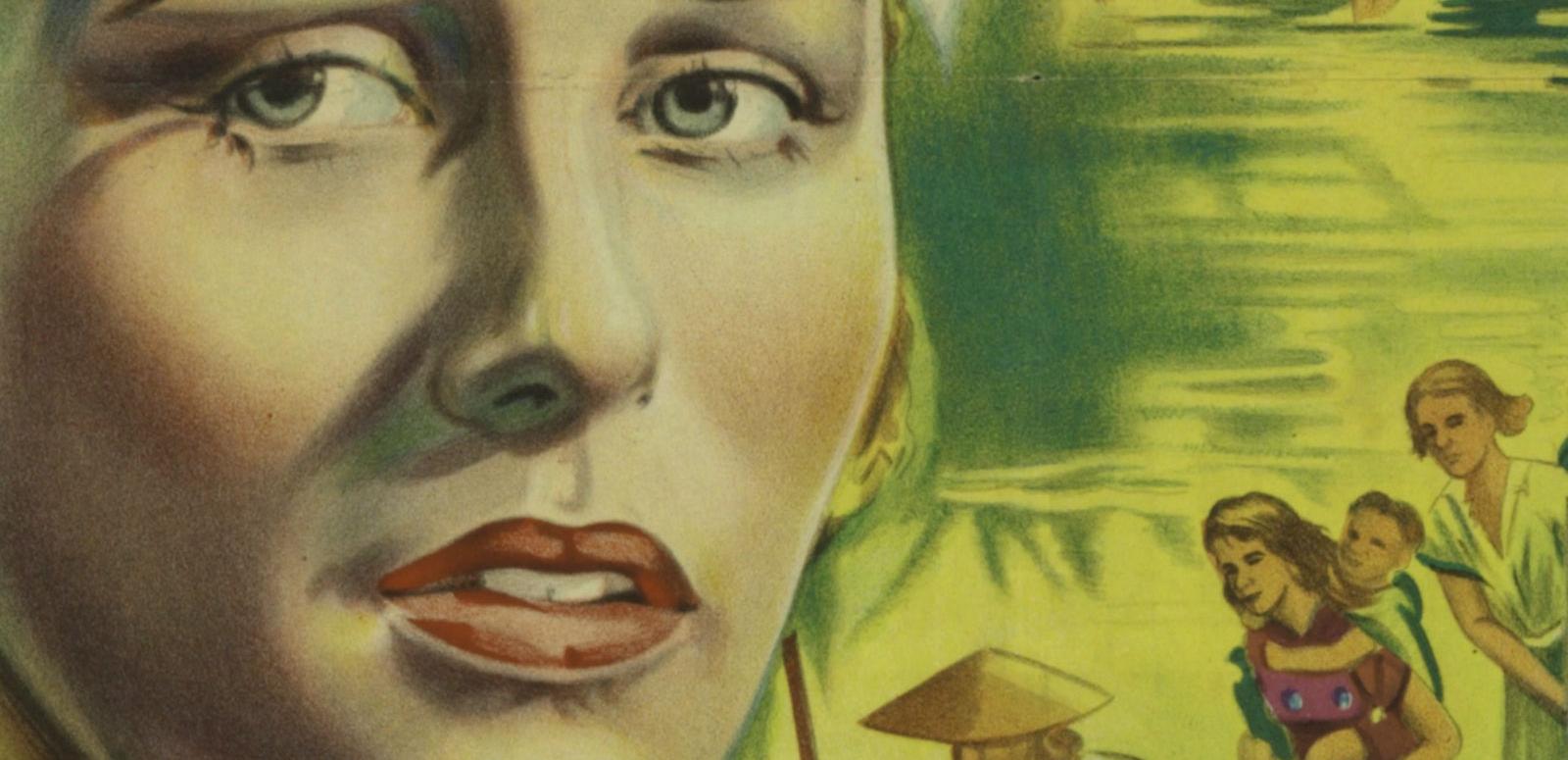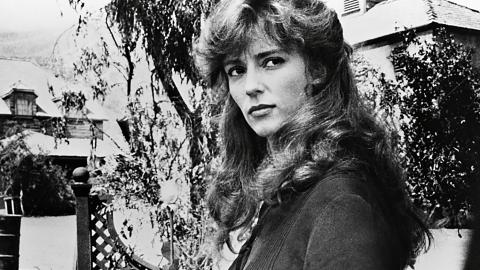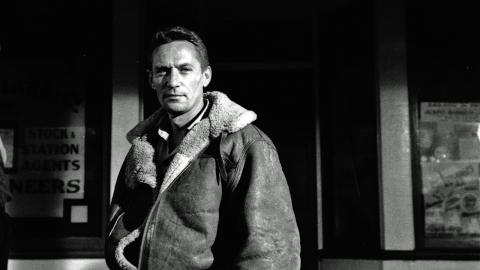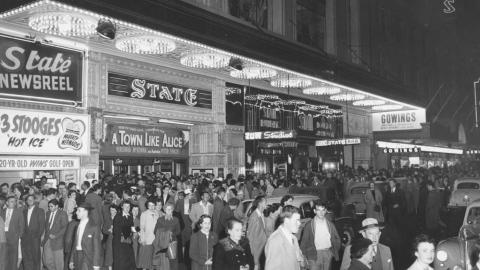

A Town Like Alice
A Town Like Alice
The film adaptation of Nevil Shute’s hugely popular 1950 novel A Town Like Alice premiered in Australia on 24 July 1956. Produced by the Rank Organisation (UK), it became the third most popular film at the British box office that year. We’re marking the 60th anniversary with a look at NFSA collection items relating to the film.
From novel to film

In 1948 Nevil Shute (1899–1960) decided to emigrate with his family from England to Australia, settling south-east of Melbourne. He had only recently arrived in his new country when he wrote A Town Like Alice, basing the lead characters and events on people he had met.
The novel traces the story of a young Englishwoman, Jean Paget, who meets Joe Harman, an Australian cattle farmer, while they are both prisoners of war in Malaya at the time of the Japanese occupation (1941-45). When the Japanese officer Captain Sugaya discovers that Joe has been helping Jean and her companions, he forces the women and children to watch as Joe is crucified and left for dead.
Many years later, Jean discovers that Joe survived and she travels to Alice Springs to find him. Meanwhile Joe is in London searching for Jean. Jean uses an inheritance to start several businesses in the small, fictional town of Willstown outside of Alice Springs while waiting to be reunited with Joe.
The film adaptation was directed by Jack Lee and written by WP Lipscomb, who was also the screenwriter for the 1957 version of Robbery Under Arms.
Lipscomb’s script only covers the first half of Shute’s novel, the period set in Malaya and the moment our two protagonists, played by Virginia McKenna and Peter Finch (1916–1977), are tearfully reunited. Much of the Australian content, and all of the story involving Jean’s entrepreneurial activities as she endeavours to turn Willstown into a ‘town like Alice’, was left out of the film.
While some location shooting was undertaken in Malaya and Australia, most of the film was shot at Pinewood Studios in the UK.
Bush premiere

A Town Like Alice had its world premiere in the UK on 1 March 1956 and was screened in Ireland and West Germany (retitled March Through Hell) before premiering in Australia. It opened in the US in 1958 under the title The Rape of Malaya.
The Australian gala premiere, or ‘bush premiere’ as reported by The Australian Women’s Weekly (8 August 1956), was held in Alice Springs at the Pioneer Walk-In Theatre. The Walk-In was an open-air theatre built by Leslie ‘Snow’ Kenna in the 1940s on the southern corner of Parsons Street and Leichhardt Terrace, next to the River Todd. The occasion was also used to raise funds for the Royal Flying Doctor Service.
Locals arrived in casual dress, carrying thick rugs and cushions for the open-air screening. The theatre was decorated with bunting and palm leaves. Peter Finch invited Beryl Oliver, the air hostess on his flight, to be his guest on the night. The two sat together, smoking throughout the screening. Nevil Shute and his wife also attended.
During the intermission, Arunta men and women from the Hermannsburg Mission wearing khaki riding pants and bright tartan checked shirts sung ‘Lest We Forget’ and ‘The Lord Has Ascended on High’ in their language. It was only in the film’s final minutes that the people of Alice Springs got to see anything of their town and district, with some locals appearing as extras on horseback and in street scenes receiving an amused reaction. The whole evening was so informal, relaxed and ‘Australian’ that The Argus (28 July 1956) jokingly reported that Hollywood would have been horrified.
The above excerpt from the film is the pivotal moment when Jean Paget (Virginia McKenna) discovers that Joe Harman (Peter Finch) didn’t die when he was crucified by the Japanese. After the war, Paget has returned to Malaya to use an inheritance to build a well for the local community in gratitude for their support during the forced march of the women and children, depicted earlier in the film. It is only through a serendipitous conversation with an elder that she learns the truth of Harman’s fate. Virginia McKenna’s reaction to the news is conveyed convincingly in a full screen close-up of her face; she registers confusion and then barely suppressed joy – almost ecstasy – as if all the painful memories of her ordeal are washed away in that one moment. We then see an establishing shot of Alice Springs which cuts to street scenes. The meandering, slow lifestyle of the central Australian town, accompanied by a musical score which is more reminiscent of an American western, is shown to great effect.
It was these scenes that amused the locals of Alice Springs when the film premiered in Australia, as they recognised streets, shops and people. The following footage of Paget in the car was actually filmed at the Pinewood Studios in the UK with the scenery projected behind the actors. There is a charming interplay between Paget and Jack Burns (Russell Napier) when he discovers she is English and asks her if she knows his relatives who live in Wolverhampton! The whole scene projects a sense of warmth, welcome and informality which is depicted as typical of the Australian character.
These lobby cards feature the US title for the film, The Rape of Malaya, and capture key dramatic moments in the story.

The fear and resignation on the faces of the men and women is vivdly captured in this moment when the Japanese military invade. NFSA title: 674028

A pivotal scene when the men and women and children are quickly separated. NFSA title: 674016

Harman (Peter Finch) and Paget (Virginia McKenna) share a quiet moment. Their relationship is the centrepiece of the film. NFSA title: 673993

Rifles with bayonets bar the women, who look on helplessly, as they are turned away from a camp. NFSA title: 673996

With tattered clothes and dirty faces, the women are questioned about the stolen chicken. NFSA title: 674027

Paget is inconsolable as Harman is held at gun point after admitting he gave the women the chicken. NFSA title: 674037

With Harman crucified, his friend casts a final glance at Paget as she is sent away believing Harman is dead. NFSA title: 674026

A kind, elderly Japanese sergeant tries to save the life of a boy bitten by a snake. NFSA title: 674031
A hungry audience
A Town Like Alice was successful, both in Australia and internationally, leading to the Rank Organisation returning to Australia to make Robbery Under Arms (1957) with Peter Finch staring as the bushranger Captain Starlight. Its Australian success also suggested that people were hungry for feature films about Australians, even if A Town Like Alice was a British production that only sparingly used Australia as a backdrop.
The film was entered into the Cannes Film Festival 1956 but was controversially withdrawn from competition amidst fears it might offend the Japanese. This brought a stinging response from Peter Finch, who referred to film festivals as a ‘joke’ that serve no cultural purpose. The film won British Academy (BAFTA) Awards for Finch and McKenna’s performances (as Best British Actor and Actress respectively) and was nominated for Best British Film and Best Film From Any Source.
A Town Like Alice also became a highly acclaimed and popular television mini-series in 1980 staring Helen Morse and Bryan Brown.
The National Film and Sound Archive of Australia acknowledges Australia’s Aboriginal and Torres Strait Islander peoples as the Traditional Custodians of the land on which we work and live and gives respect to their Elders both past and present.


